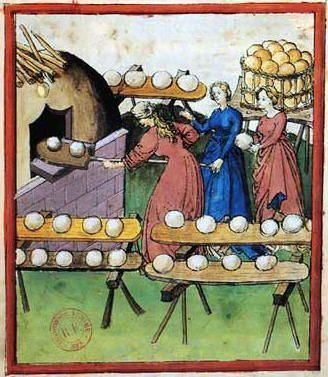 | ||
Similar Luttrell Psalter, Book of hours, Roman de la Rose, Très Riches Heures d, Early American gardens | ||
Tacuinum sanitatis rhineland 15thc v english www moleiro com
The Tacuinum (sometimes Taccuinum) Sanitatis is a medieval handbook mainly on health, based on the Taqwīm as‑siḥḥah تقويم الصحة ("Maintenance of Health"), an eleventh-century Arab medical treatise by Ibn Butlan of Baghdad. Aimed at a cultured lay audience, the text exists in several variant Latin versions, the manuscripts of which are characteristically so profusely illustrated that one student called the Tacuinum "a trecento picture book," only "nominally a medical text".
Contents
- Tacuinum sanitatis rhineland 15thc v english www moleiro com
- succeeding the tacuinum sanitatis harvest crookedwillow
- References
Though describing in detail the beneficial and harmful properties of foods and plants, it is far more than a herbal. Listing its contents organically rather than alphabetically, it sets forth the six essential elements for well-being:
Tacuinum Sanitatis says that illnesses result from imbalance of these elements.
The terse paragraphs of the treatise were freely translated into Latin in mid-thirteenth-century Palermo or Naples, which continued an Italo-Norman tradition as one of the prime sites for peaceable inter-cultural contact between the Islamic and European worlds. "Magister Faragius" (Ferraguth) in Naples took responsibility for one translation into Latin, in a manuscript in the Bibliothèque Nationale, Paris, MS Lat. 15362 (noted by Witthoft 1978:58 note 9).
Four handsomely illustrated complete late fourteenth-century manuscripts of the Taccuinum, all produced in Lombardy, survive, in Vienna, Paris, Liège and Rome, as well as scattered illustrations from others, as well as fifteenth-century codices. Carmelia Opsomer published a commented facsimile of the ms 1041 held in the library of the university of Liège. Unillustrated manuscripts present a series of tables, with a narrative commentary on the facing pages. The Taccuinum was first printed in 1531.
The Tacuinum was very popular in Western Europe in the Late Middle Ages; an indication of that popularity is the use of the word taccuino in modern Italian to mean any kind of pocket handbook, guide, notebook.
In addition to its importance for the study of medieval medicine, the Tacuinum is also of interest in the study of agriculture and cooking; for example, one of the earliest identifiable images of the carrot — a modern plant — is found in it. Carrot also appears in The Greek Herbal of Dioscorides: Illustrated by a Byzantine A.D. 512
In 2008, the Spanish publishing house M. Moleiro Editor published the first and only facsimile of the Tacuinum Sanitatis kept at the Bibliothèque nationale de France, in an edition limited to 987 copies. This edition was accompanied by a commentary volume by Alain Touwaide (Smithsonian), Eberhard König (Freie Universität Berlin) and Carlos Miranda García-Tejedor (Doctor in History).
